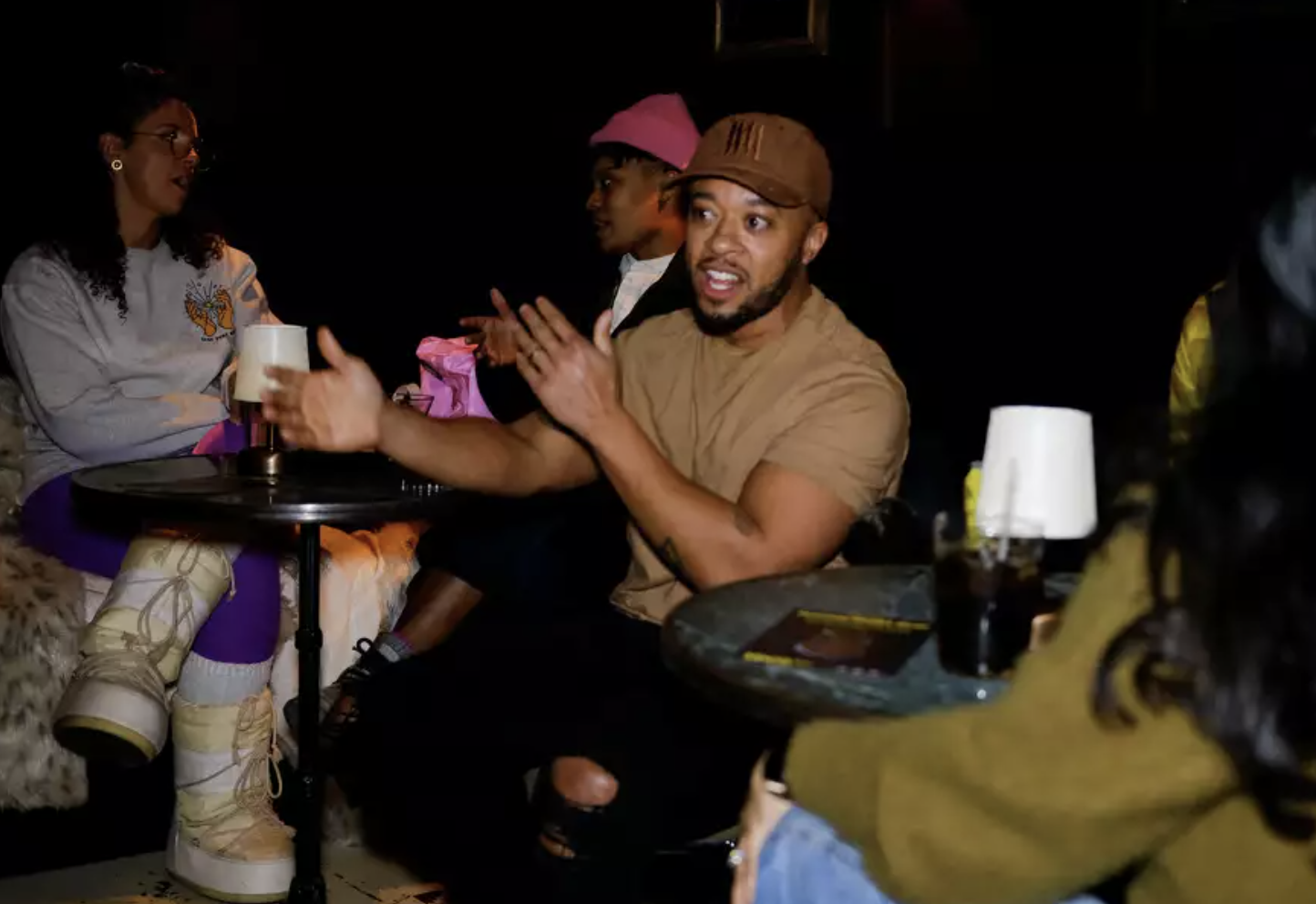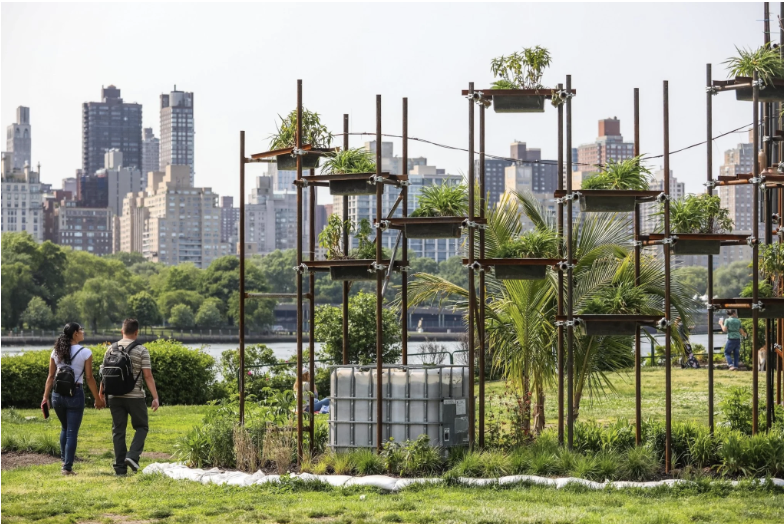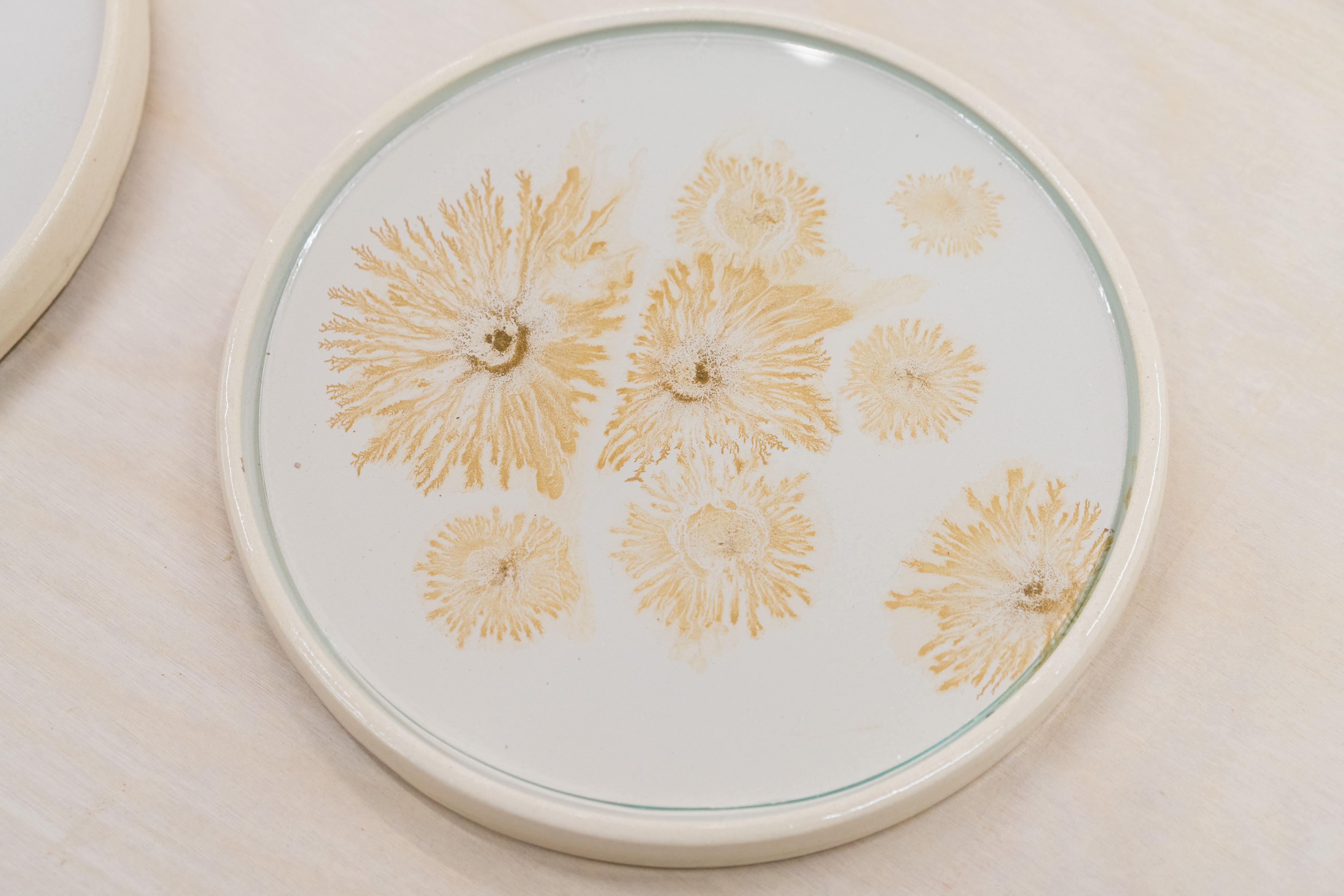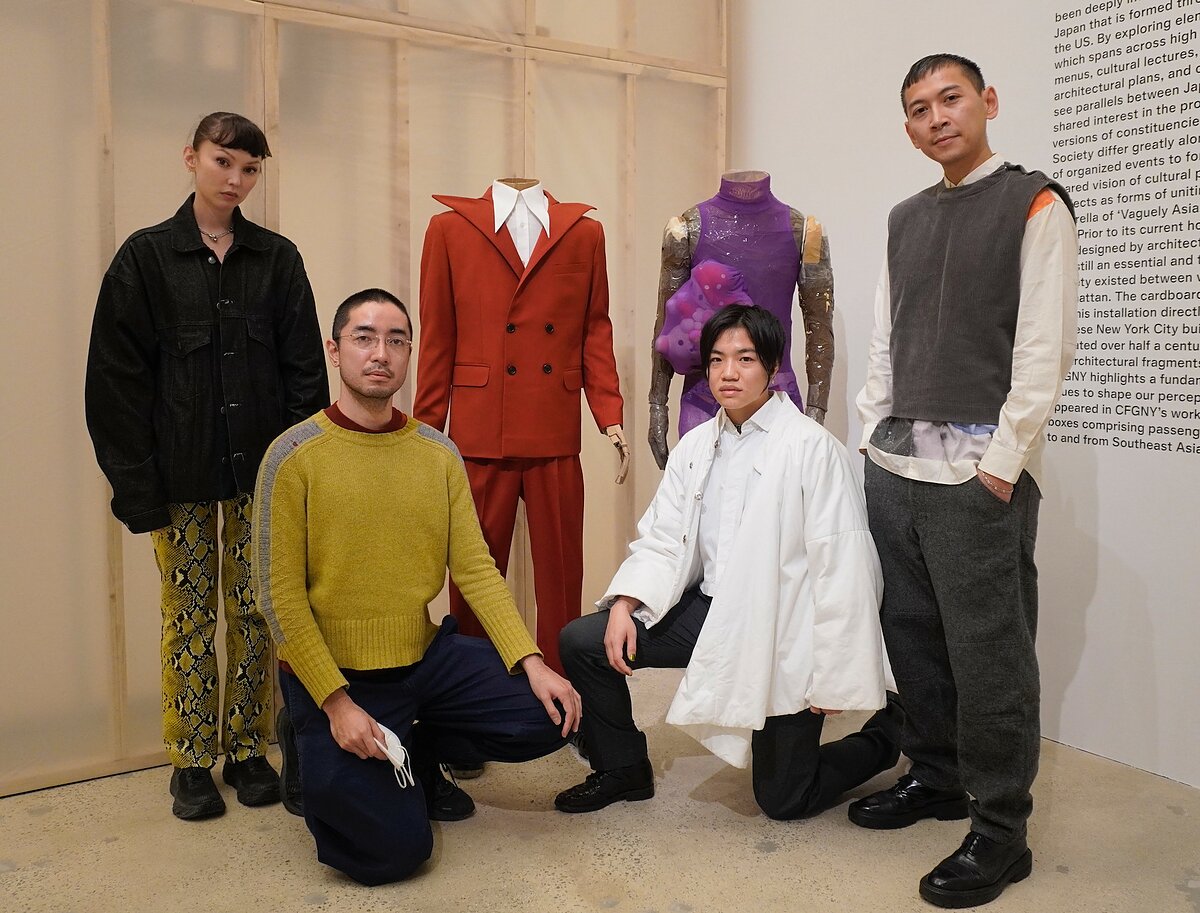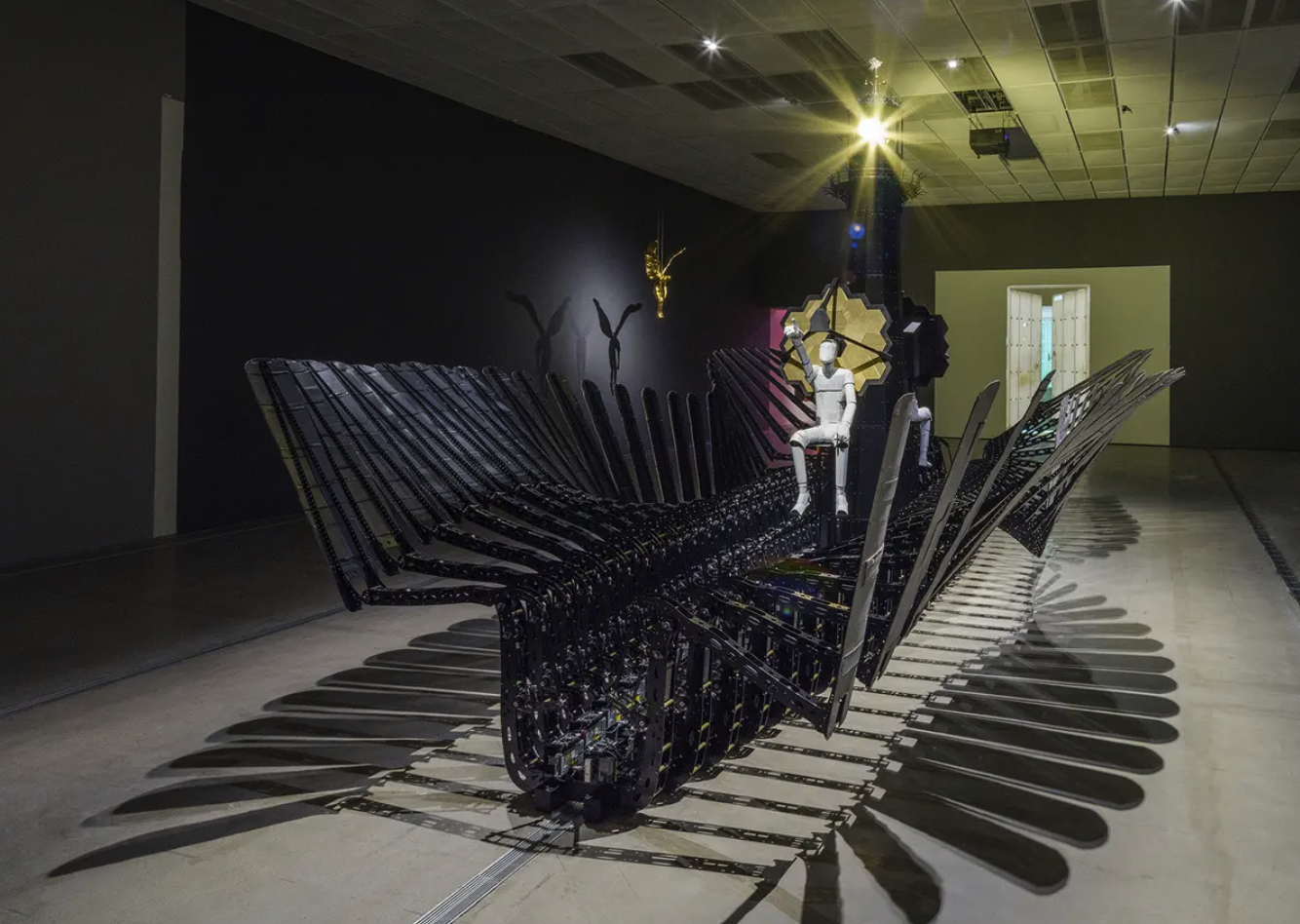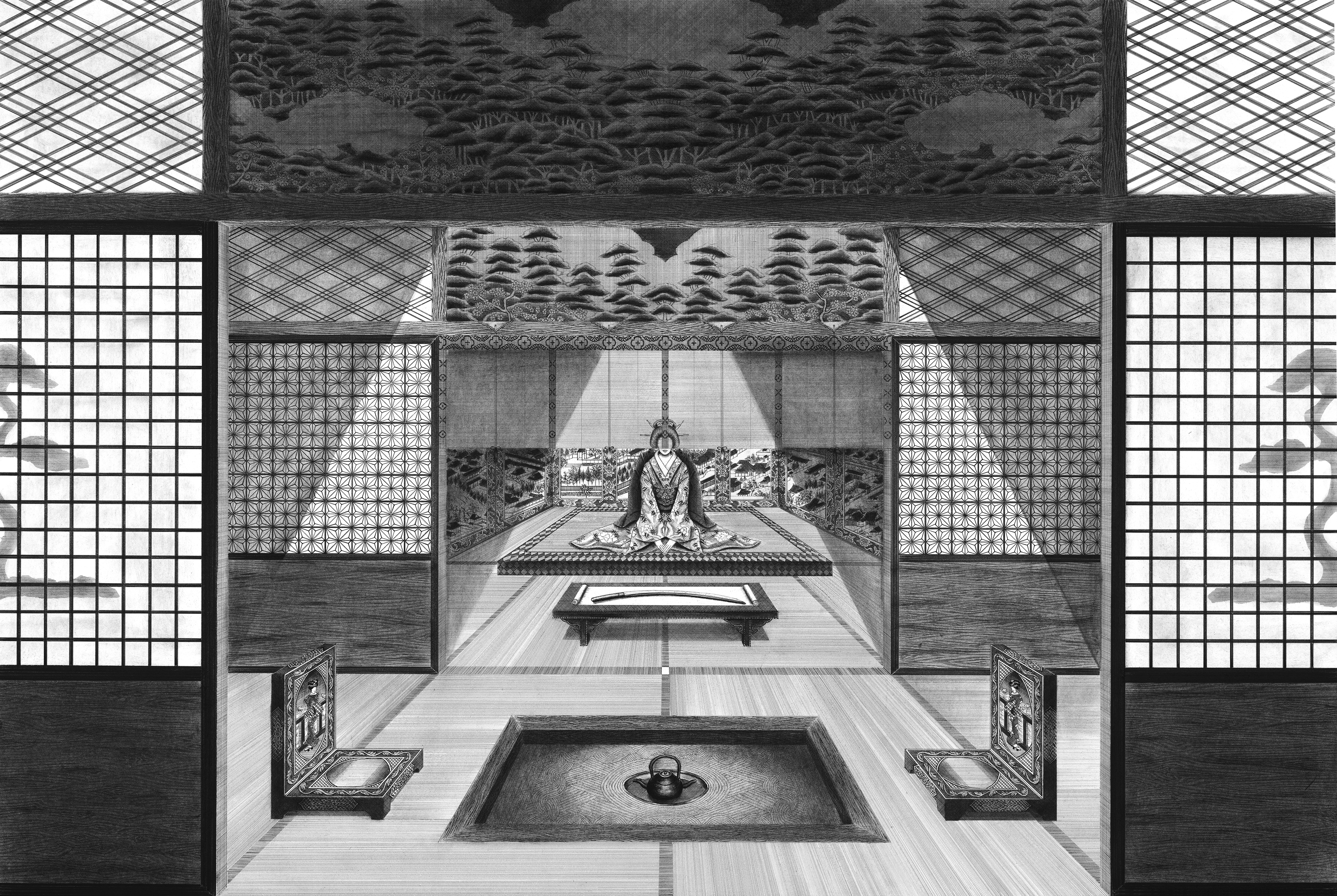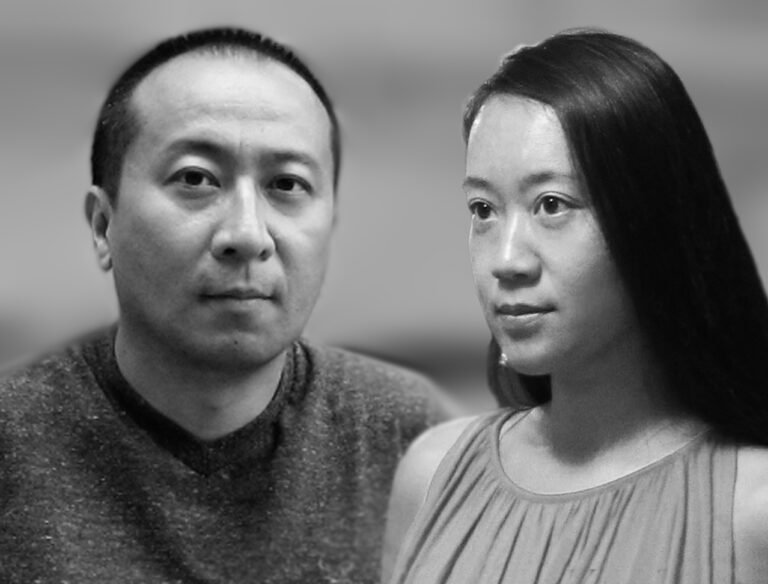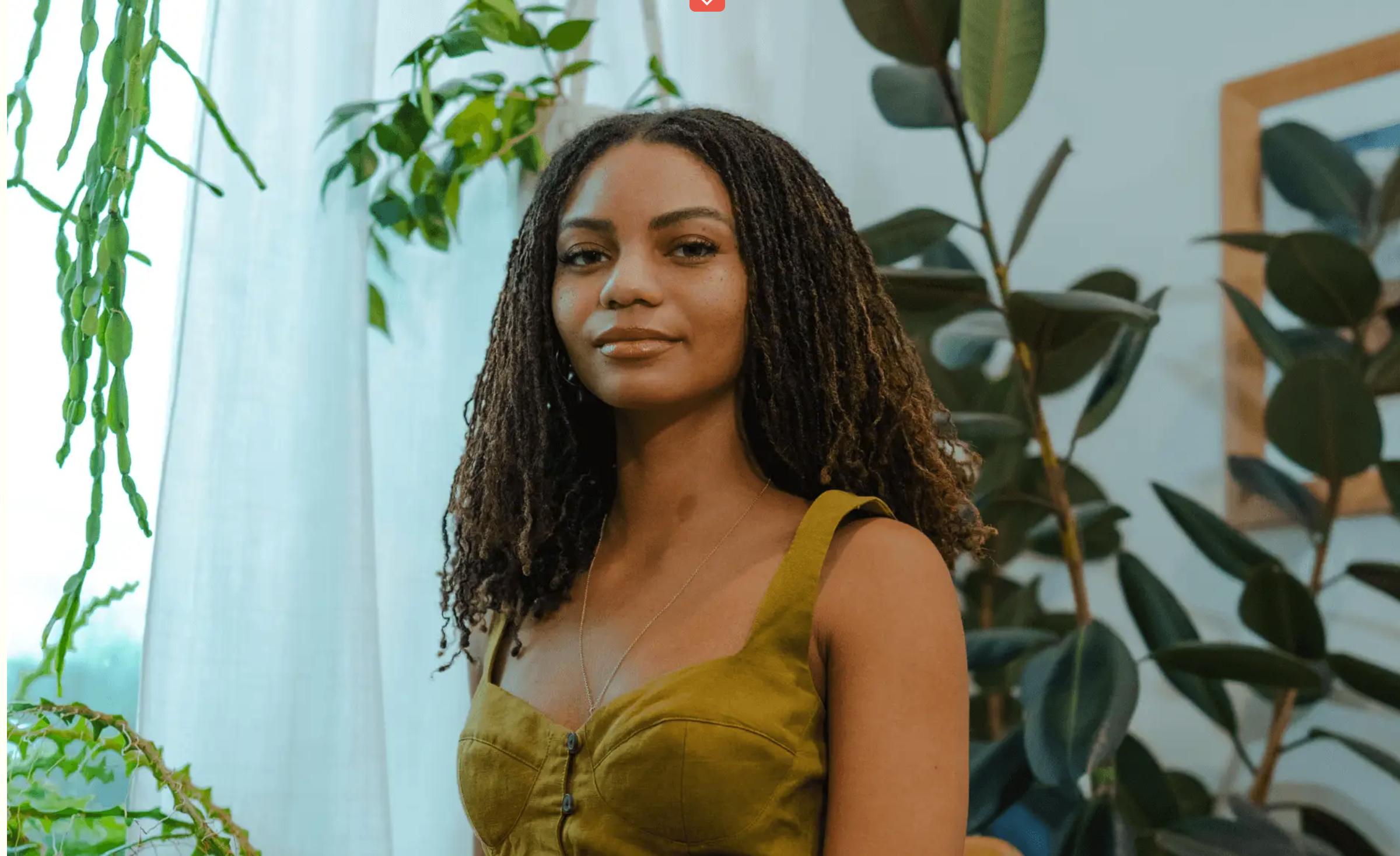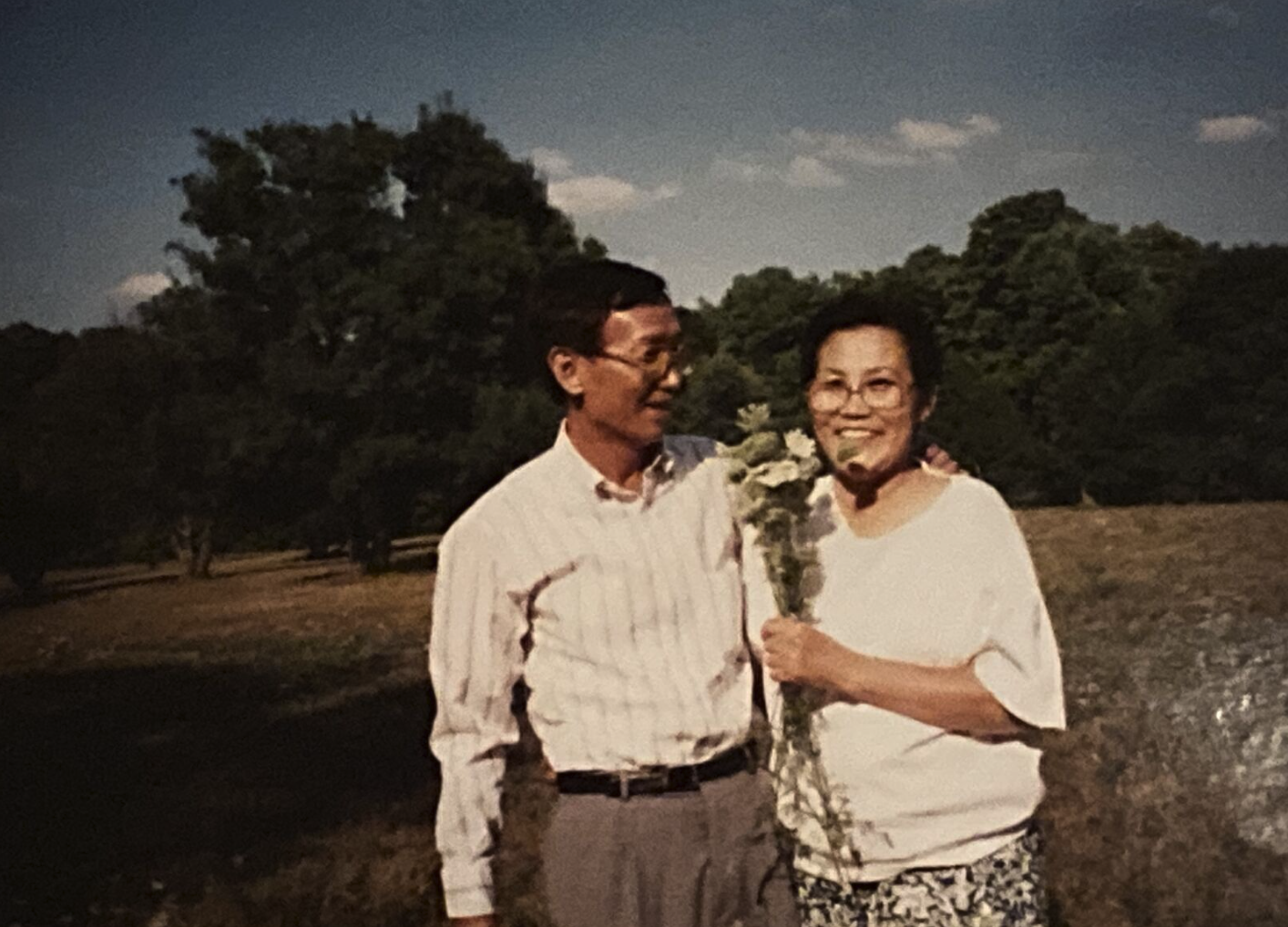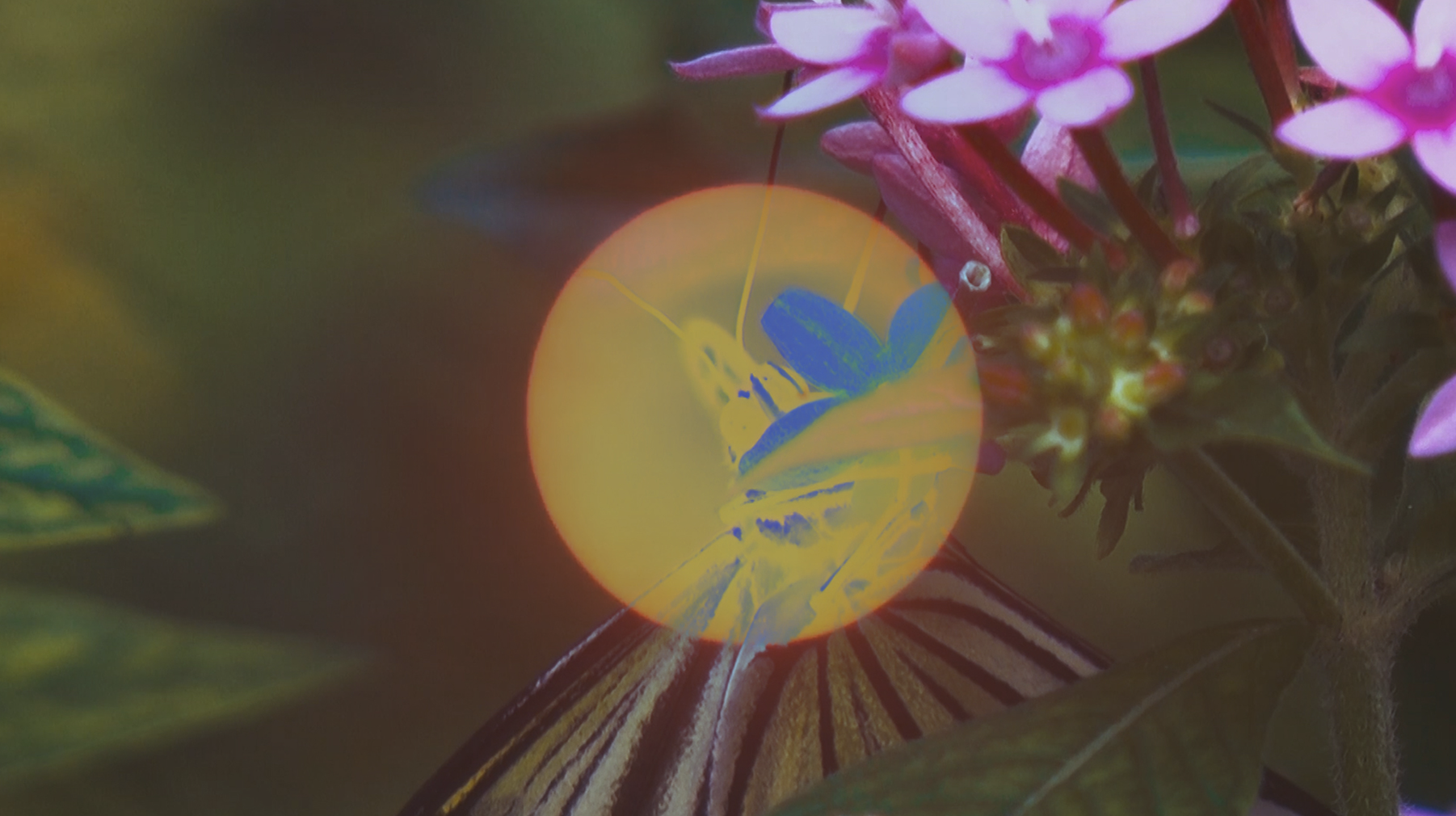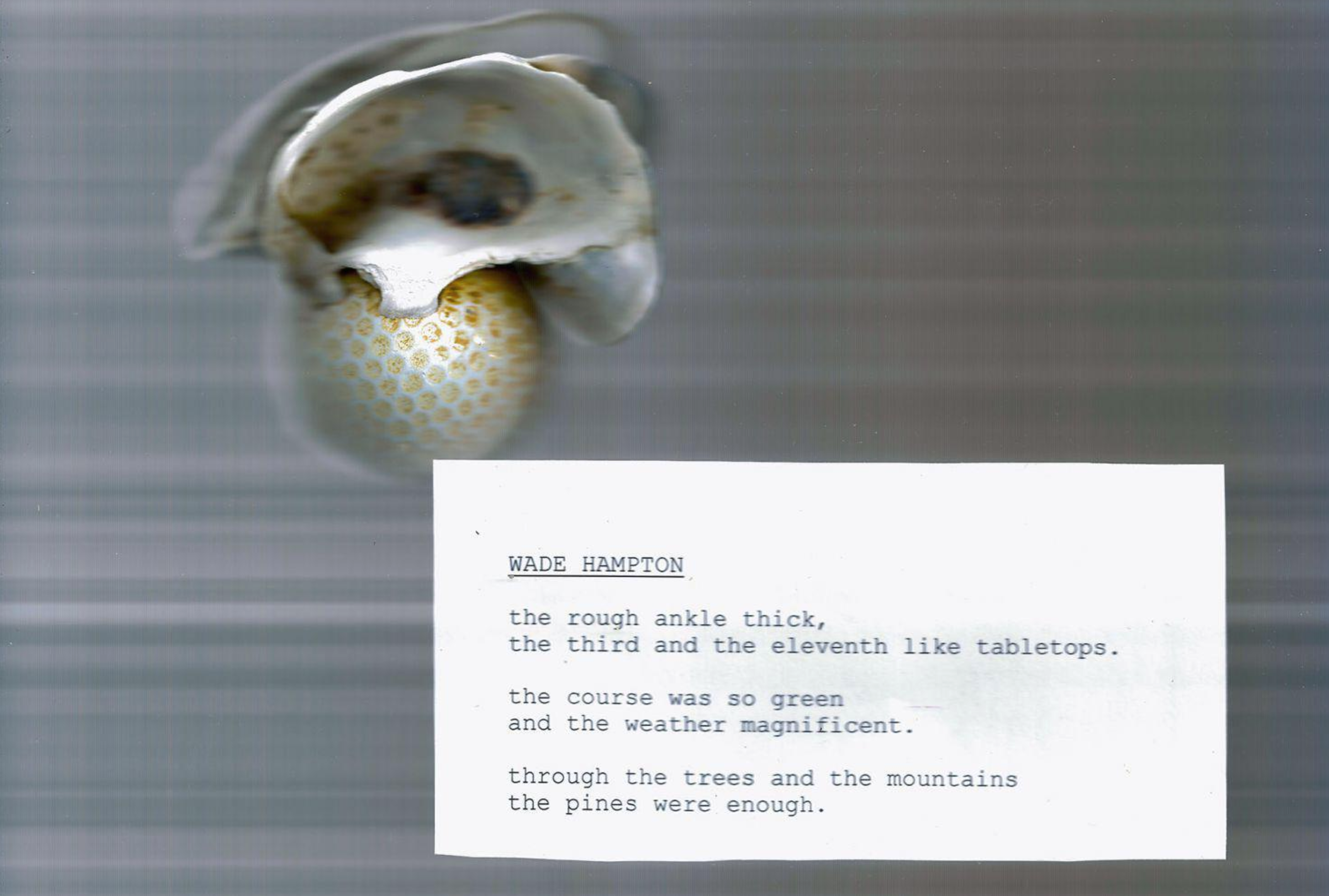
Forge Project seeks new possibilities with nonprofit transition
Earlier this year, Forge Project acquired a new work quite unlike the rest in its collection: a short film featuring members of its staff and community satirizing art-world philanthropy as a call to action.
“Have you ever wondered how to ethically invest in Native futures? Redistribute wealth? Develop new models of Indigenous wealth? If so, this video is for you!” says non-Native actor Jim Fletcher in “Forge Reciprocal Relations,” by the artist collective New Red Order.
Read more
Earlier this year, Forge Project acquired a new work quite unlike the rest in its collection: a short film featuring members of its staff and community satirizing art-world philanthropy as a call to action.
“Have you ever wondered how to ethically invest in Native futures? Redistribute wealth? Develop new models of Indigenous wealth? If so, this video is for you!” says non-Native actor Jim Fletcher in “Forge Reciprocal Relations,” by the artist collective New Red Order.
Read more
august 8, 2024
profile times union
profile times union
----------------------------------------------------------------------------------------
The Group Forging a Community of Color Upstate
On an unseasonably warm afternoon last October, amid a dazzling field of blooming cosmos overlooking rolling hills, members of Upstate Color (UPCO), a community group for people of color, exchanged stories while assembling custom-scented bath salts. Taking in air perfumed by the scent of rose, mint and lavender essential oils at the Indigenous-led arts nonprofit Forge Project, folks shared what brought them to the Hudson Valley, and what their experiences up here have been like.
“If I had to pick one scene that really captures the essence of what UPCO is to me, it’s that,” said Jordan Casteel, an artist and the founder of UPCO. “It was such a wonderful example of how we could create space with intention for people.”
Read more
On an unseasonably warm afternoon last October, amid a dazzling field of blooming cosmos overlooking rolling hills, members of Upstate Color (UPCO), a community group for people of color, exchanged stories while assembling custom-scented bath salts. Taking in air perfumed by the scent of rose, mint and lavender essential oils at the Indigenous-led arts nonprofit Forge Project, folks shared what brought them to the Hudson Valley, and what their experiences up here have been like.
“If I had to pick one scene that really captures the essence of what UPCO is to me, it’s that,” said Jordan Casteel, an artist and the founder of UPCO. “It was such a wonderful example of how we could create space with intention for people.”
Read more
february 22, 2024
profile
times union
profile
times union
Vivien Sansour Plants Seeds of Hope for Palestine
“In Palestine, we bury our seeds in ash,” said Palestinian American artist and researcher Vivien Sansour, beckoning us to take a handful of soil and a packet of seeds. They are rose winter radishes, an heirloom from Palestine from her ongoing project, Palestine Heirloom Seed Library. “I invite you to bury with it the parts of you that are willing to accept this mediocrity.”
Organized by Sansour along with a group of faculty, staff, students, and community members at Bard College on a recent Friday afternoon in December, the symbolic funeral brought together nearly a hundred mourners to the campus’s Blithewood Garden to affirm life and hope in the face of suffocating death and destruction.
Read more
“In Palestine, we bury our seeds in ash,” said Palestinian American artist and researcher Vivien Sansour, beckoning us to take a handful of soil and a packet of seeds. They are rose winter radishes, an heirloom from Palestine from her ongoing project, Palestine Heirloom Seed Library. “I invite you to bury with it the parts of you that are willing to accept this mediocrity.”
Organized by Sansour along with a group of faculty, staff, students, and community members at Bard College on a recent Friday afternoon in December, the symbolic funeral brought together nearly a hundred mourners to the campus’s Blithewood Garden to affirm life and hope in the face of suffocating death and destruction.
Read more
december 18, 2023
profile
the amp
profile
the amp
Arooj Aftab, Shahzad Ismaily, and Vijay Iyer on Love in Exile
When musicians as singularly virtuosic and acclaimed as Arooj Aftab, Shahzad Ismaily, and Vijay Iyer are come together to merge their talents, it can often be a challenge to produce something whose sum is greater than its already enormous parts. Yet the group’s transcendent, self-titled debut, Love in Exile, accomplishes exactly that.
“It’s no small thing to remark on mutual understanding and chemistry and it’s not always clear what the source is. But one source may be the recognition of the self in the other; when the sun speaks to the sun, when the moon speaks to the moon.” —Shahzad Ismaily
Read more
july 13, 2023
interview
the amp
interview
the amp
A Trickle in Time: Mary Mattingly’s Watery Manifesto for Collective Futures
Faced with the increasingly volatile forces of nature brought on by anthropogenic climate change, our seemingly solid structures often reveal themselves to be all the more transparently hollow. Like much of Mattingly’s practice, this exhibition works overtime, both identifying problems of ecology and the environment while offering potential curative alternatives—all with her characteristic sense of joy, community, and most urgently, hope. In doing so, she follows in the footsteps of artists like Agnes Denes, Mel Chin, and Maria Thereza Alves who have long recognized that it is not enough for artists to simply point to an ill; it is the artist’s distinct power to imagine something beyond it.
Read more
july 10, 2023
review
mold
review
mold
Director Celine Song on Her Debut Film, “Past Lives”
Based on events in Song’s own life, the drama and tension of the film lies in the profound melancholy of life moving on and the agony of possibilities. Told from the lens of immigration, these experiences are drawn even closer to the surface; past lives still haunt the present. Since premiering at Sundance this past January, the film has been dubbed the best movie of the year thus far and is already being teed up for Oscar nominations.
Ahead of the film’s nationwide release on June 23, we sat down with Celine Song to discuss the debut, her prior work as a playwright, and why the concept of alternative realities, past lives, and multiverses seems to have particular resonance within AAPI and immigrant storytelling in recent years.
Read more
june 13, 2023
interview
the amp
interview
the amp
TJ Shin De-Sanitizes Natural History
Arranged in a mycelial pattern on a low floor plinth, a smoldering network of incense made from mugwort transfected with Shin’s DNA rests on a chalk-white bed of diatomaceous earth. Recalling rituals of cremation by merging their own genetic material with the anti-malarial weed, Shin binds themself to this storied plant as it burns slowly against a snowy substrate of insecticidal fossil dust. In doing so, the artist becomes a fumigatory agent, or a weapon of sanitizing purity and cleanliness.
Read more
Arranged in a mycelial pattern on a low floor plinth, a smoldering network of incense made from mugwort transfected with Shin’s DNA rests on a chalk-white bed of diatomaceous earth. Recalling rituals of cremation by merging their own genetic material with the anti-malarial weed, Shin binds themself to this storied plant as it burns slowly against a snowy substrate of insecticidal fossil dust. In doing so, the artist becomes a fumigatory agent, or a weapon of sanitizing purity and cleanliness.
Read more
april 19, 2023
review
the amp
review
the amp
Shahzia Sikander on Using Art to Inspire Possibilities
“Society’s perception of the tensions between women and power and how erasure is enacted by the social forces that shape women’s lives constructs what femininity means to me. The feminine as the monstrous, the abject, the fecund, the immense, and the vulnerable have permeated literary history. Intimacy, selfhood, valor, resistance, and femininity’s intersections with race and war are indicators of the fear that lurks when boundaries melt.” -Shahzia Sikander
Read more
“Society’s perception of the tensions between women and power and how erasure is enacted by the social forces that shape women’s lives constructs what femininity means to me. The feminine as the monstrous, the abject, the fecund, the immense, and the vulnerable have permeated literary history. Intimacy, selfhood, valor, resistance, and femininity’s intersections with race and war are indicators of the fear that lurks when boundaries melt.” -Shahzia Sikander
Read more
march 21, 2023
interview the amp
interview the amp
Tomie Arai and Diane Wong on Collecting AAPI Stories
“How do we build memorials and public spaces to process our collective grief and loss?”
-Tomie Arai
“What’s beautiful about memory work is that it can shape-shift with time.”
-Diane Wong
Read more
“How do we build memorials and public spaces to process our collective grief and loss?”
-Tomie Arai
“What’s beautiful about memory work is that it can shape-shift with time.”
-Diane Wong
Read more
march 6, 2023
interview the amp
interview the amp
CFGNY on Using Fashion to Expand Asian Identity
Depending on when and who you ask, the fashion label-cum-art collective CFGNY can stand for either “Concept Foreign Garments New York” or “Cute Fucking Gay New York.” These interchangable definitions both summarize the group perfectly in their own way, one in meaning and one spirit, and together are demonstrative of a deep-seated dedication to the pluralistic and plastic.
Read more
Depending on when and who you ask, the fashion label-cum-art collective CFGNY can stand for either “Concept Foreign Garments New York” or “Cute Fucking Gay New York.” These interchangable definitions both summarize the group perfectly in their own way, one in meaning and one spirit, and together are demonstrative of a deep-seated dedication to the pluralistic and plastic.
Read more
february 10, 2023
interview the amp
interview the amp
“This is Home” Captures the Everyday Beauty of Community
What makes a group of people a community? When does a place become a home? Reigning in the year of the water rabbit, the current exhibition at Flushing Town Hall features the work of three photographers capturing NYC’s AAPI enclaves. Titled “This is Home,” the show explores the indelible sense of belonging, pride, and self-assuredness present in these neighborhoods.
Read more
What makes a group of people a community? When does a place become a home? Reigning in the year of the water rabbit, the current exhibition at Flushing Town Hall features the work of three photographers capturing NYC’s AAPI enclaves. Titled “This is Home,” the show explores the indelible sense of belonging, pride, and self-assuredness present in these neighborhoods.
Read more
january 24, 2023
review
the amp
review
the amp
Searching Beyond the Immediately Observable: Choe U-Ram at MMCA
We often think about technological progress within linear terms, like an arrow that only moves forward from its starting point. We tend to assume technology is a positive thing; that this ceaseless pursuit into the unknown is synonymous with advancement. Little Ark is a directionless vessel, heading nowhere discernable and to no foreseeable end, calling to question whether this assumption about progress is really true.
Read more
We often think about technological progress within linear terms, like an arrow that only moves forward from its starting point. We tend to assume technology is a positive thing; that this ceaseless pursuit into the unknown is synonymous with advancement. Little Ark is a directionless vessel, heading nowhere discernable and to no foreseeable end, calling to question whether this assumption about progress is really true.
Read more
december 21, 2022
essay
hyundai artlab
essay
hyundai artlab
Kyung-Me on Depicting the Labyrinth of the Psyche
Meticulously detailed, each of the eight ink drawings depict surreal scenes that attempt to uncover a spiraling psychology. There is a maddening, inescapable symmetry to these works. Kyung-Me’s beautiful labyrinth of mirrors is a world that is both collapsing in on itself and opening wide like a maw, consuming its viewers.
Read more
Meticulously detailed, each of the eight ink drawings depict surreal scenes that attempt to uncover a spiraling psychology. There is a maddening, inescapable symmetry to these works. Kyung-Me’s beautiful labyrinth of mirrors is a world that is both collapsing in on itself and opening wide like a maw, consuming its viewers.
Read more
december 13, 2022
interview the amp
interview the amp
Lily & Honglei on Using Old Stories to Heal New Wounds
“We found a lot of similarities between Asian immigrants’ life and ancient Chinese folk stories. Those hundred-year-old stories can be easily related to people suffering today. We place the ancient characters in today’s American society to reflect the isolation, family separation, and hard conditions in new immigrants’ life.”
-Honglei
Read more
“We found a lot of similarities between Asian immigrants’ life and ancient Chinese folk stories. Those hundred-year-old stories can be easily related to people suffering today. We place the ancient characters in today’s American society to reflect the isolation, family separation, and hard conditions in new immigrants’ life.”
-Honglei
Read more
december 2, 2022
interview the amp
interview the amp
Leah Thomas is Building a Generation of Intersectional Environmentalists
According to Thomas, while environmental justice establishes the policies and the data, intersectional environmentalism establishes the culture and framework needed to tackle the climate crisis. “Through environmental justice research, we’ve been able to see how racism and income are often compounding factors and big determinants as to whether or not, for example, people will live with toxic waste in their neighbourhood,” Thomas explains.
Read more
According to Thomas, while environmental justice establishes the policies and the data, intersectional environmentalism establishes the culture and framework needed to tackle the climate crisis. “Through environmental justice research, we’ve been able to see how racism and income are often compounding factors and big determinants as to whether or not, for example, people will live with toxic waste in their neighbourhood,” Thomas explains.
Read more
october 31, 2022
profile
gal-dem
profile
gal-dem
How Filipino American artist Carlos Villa poignantly visualised Asian American invisibility
In 1958, 22-year-old Carlos Villa (1936-2013) received a troubling answer to a pressing question. As a young Filipino American student at the San Francisco Art Institute, Villa was curious to know about the history of Filipino American art. But when he asked his professor, Walt Kuhlman, he was bluntly told, “There is no Filipino American art history.” By Villa’s telling, this conversation catalysed a lifelong dedication to exploring and expressing his identity through his work as an artist, activist and educator.
Read more
In 1958, 22-year-old Carlos Villa (1936-2013) received a troubling answer to a pressing question. As a young Filipino American student at the San Francisco Art Institute, Villa was curious to know about the history of Filipino American art. But when he asked his professor, Walt Kuhlman, he was bluntly told, “There is no Filipino American art history.” By Villa’s telling, this conversation catalysed a lifelong dedication to exploring and expressing his identity through his work as an artist, activist and educator.
Read more
may 3, 2022
review
the art newspaper
review
the art newspaper
Behind Dansaekhwa’s Rapid Rise into a Blue-Chip Movement
Translating to “Korean monochrome painting” in English, Dansaekhwa developed its universe of austere abstraction of its own accord, inspired by the specific dispossessing trauma of the Korean War and its wake. “We have come to a point where it is no longer possible to represent anything,” Park Seo-bo said upon the debut of his essential “Ecriture” works in 1973.
Read more
Translating to “Korean monochrome painting” in English, Dansaekhwa developed its universe of austere abstraction of its own accord, inspired by the specific dispossessing trauma of the Korean War and its wake. “We have come to a point where it is no longer possible to represent anything,” Park Seo-bo said upon the debut of his essential “Ecriture” works in 1973.
Read more
october 25, 2021
essay
artsy
essay
artsy
A Modern American Roadtrip
Coming from the farmlands of South Korea, [my grandparents] rooted themselves in what they knew and understood best—the soil, trees, mountains, and rivers. On rare leisurely weekends, all six of them went camping at Wisconsin Dells State Park a few hours away. Laughing around a campfire, they piled kimchi onto their hotdogs and played the Korean version of rock, paper, scissors. Years later, when they moved to California, they visited National Parks like Yosemite, Yellowstone, and Arches, in awe of their impossible grandeur.
Read more
Coming from the farmlands of South Korea, [my grandparents] rooted themselves in what they knew and understood best—the soil, trees, mountains, and rivers. On rare leisurely weekends, all six of them went camping at Wisconsin Dells State Park a few hours away. Laughing around a campfire, they piled kimchi onto their hotdogs and played the Korean version of rock, paper, scissors. Years later, when they moved to California, they visited National Parks like Yosemite, Yellowstone, and Arches, in awe of their impossible grandeur.
Read more
summer 2021
essay
your national parks magazine
essay
your national parks magazine
Utopia in Bursts: The Insitute of Queer Ecology
A pervasive and narrow-reading of Darwinian evolutionary theory provided further cause for queer subversion. That reproduction and competition is the crux of all life on earth is one the earliest, most fundamental principles taught in biology, summarized roughly as the “survival of the fittest.” This limited understanding, however, has led to a harmful and widespread determination that, scientifically, queerness is unnatural when it is anything but—biology is brimming with instances of queer life.
Read more
A pervasive and narrow-reading of Darwinian evolutionary theory provided further cause for queer subversion. That reproduction and competition is the crux of all life on earth is one the earliest, most fundamental principles taught in biology, summarized roughly as the “survival of the fittest.” This limited understanding, however, has led to a harmful and widespread determination that, scientifically, queerness is unnatural when it is anything but—biology is brimming with instances of queer life.
Read more
fall/winter 2020
profile cura
profile cura
On Russian Terraforming: The Space Race to Re-Engineer Our Imagined Futures
Founded by entrepreneur and philanthropist Alexander Mamut in 2009, the Strelka Institute is hardly what one might expect from a Russian university. With a mission to "educate the next generation of architects, designers, and media professionals, enabling them to shape the 21st century world,” it feels distinctly of the kind of heady cultural ilk affiliated with DIS Magazine and Hito Steyerl videos (i.e. intellectually radical, politically egalitarian and decidedly "cool").
Read more
Founded by entrepreneur and philanthropist Alexander Mamut in 2009, the Strelka Institute is hardly what one might expect from a Russian university. With a mission to "educate the next generation of architects, designers, and media professionals, enabling them to shape the 21st century world,” it feels distinctly of the kind of heady cultural ilk affiliated with DIS Magazine and Hito Steyerl videos (i.e. intellectually radical, politically egalitarian and decidedly "cool").
Read more
the dirt issue
2020
essay
silica mag
essay
silica mag
Golf Poems: A Transcendentalist Ode to the Anthropocene
meander the coastal dunes during the front nine to the rocky coastline
a shot over the Pacific,
guarded majestic oceanfront
par three’s number fifteen
number sixteen par four seventeen
back-nine Holy Grail
its place in the upper echelon of history
Read more
meander the coastal dunes during the front nine to the rocky coastline
a shot over the Pacific,
guarded majestic oceanfront
par three’s number fifteen
number sixteen par four seventeen
back-nine Holy Grail
its place in the upper echelon of history
Read more
the homeland issue 2019
poems
silica mag
poems
silica mag

